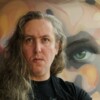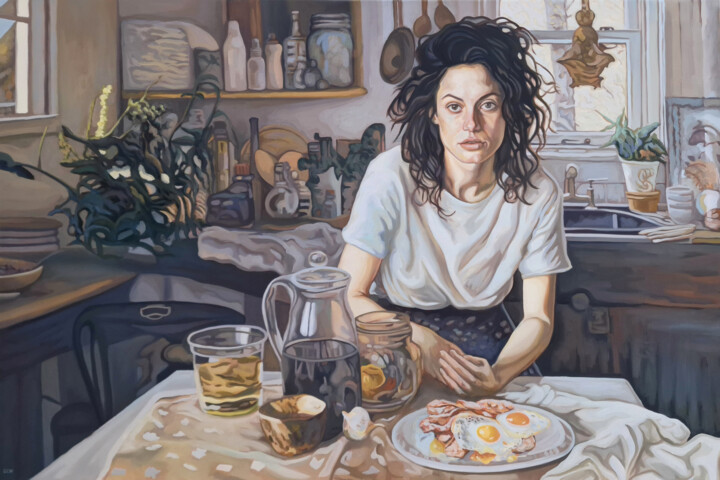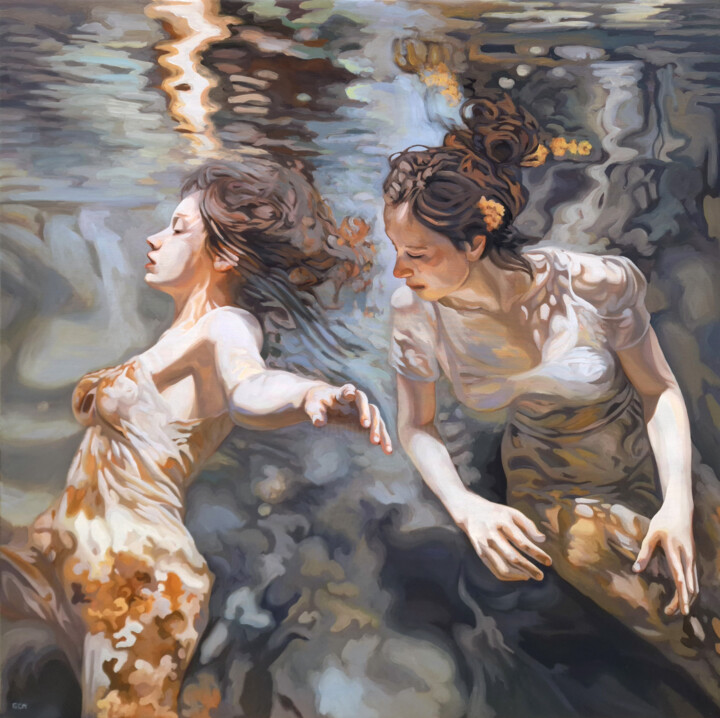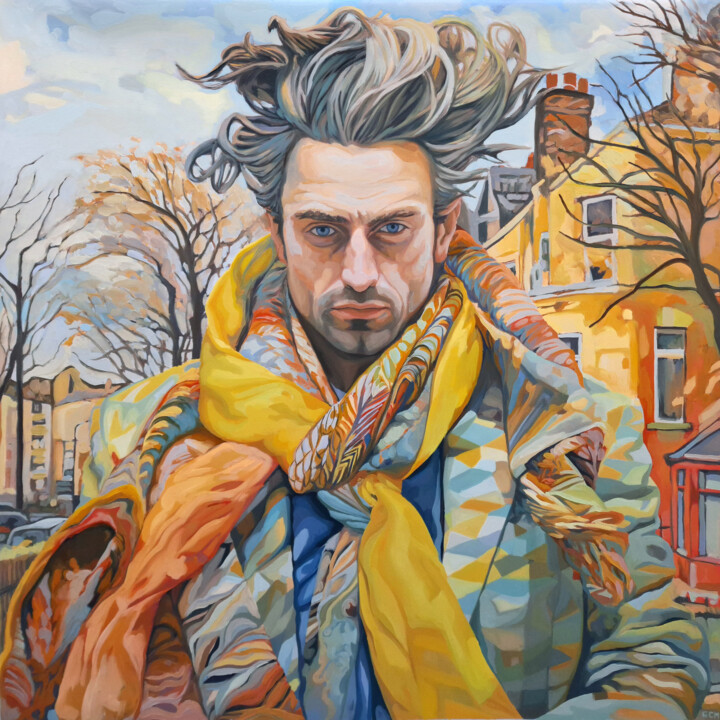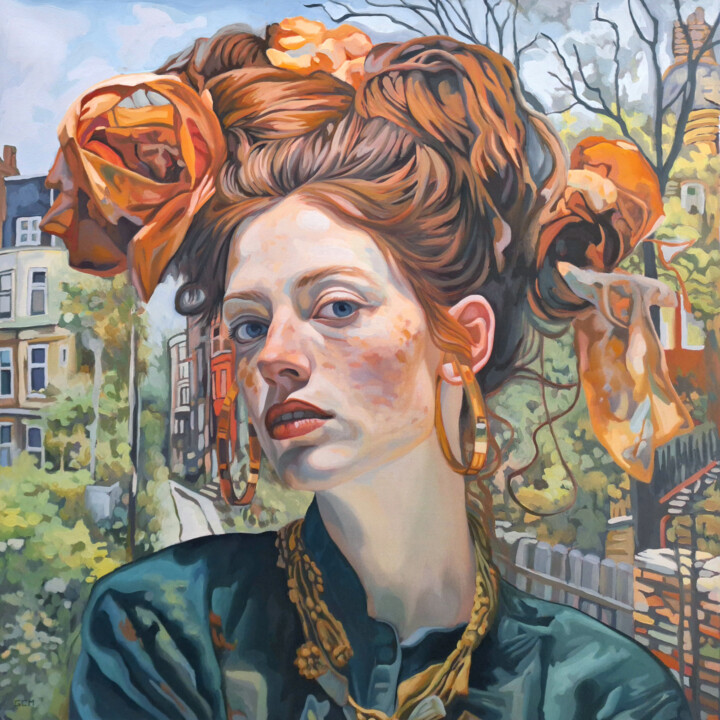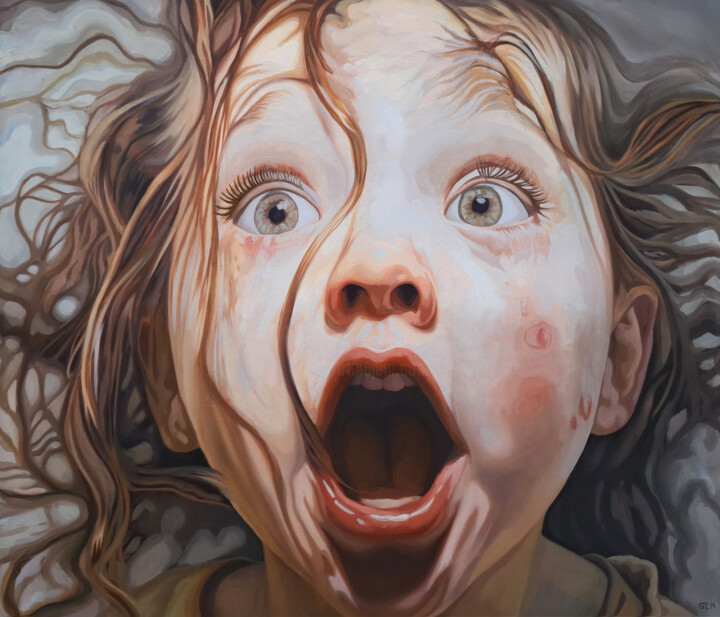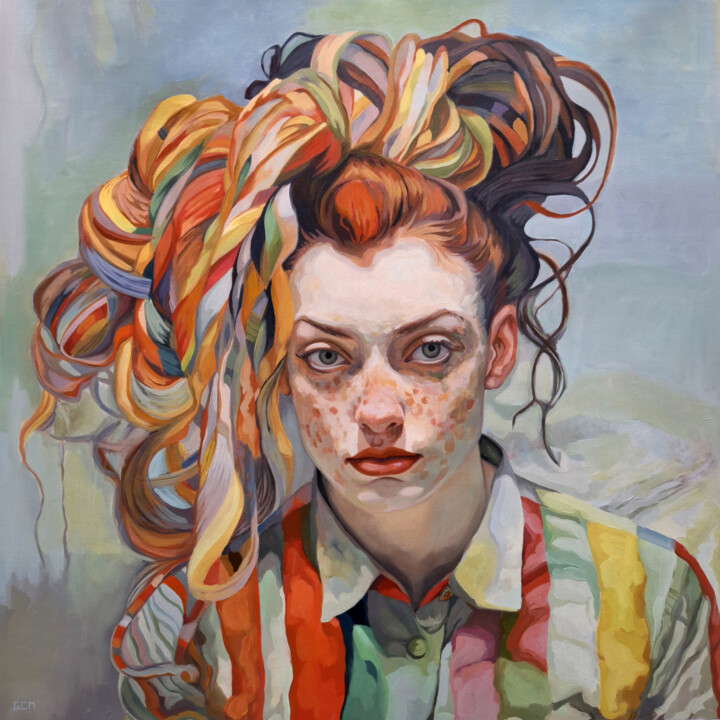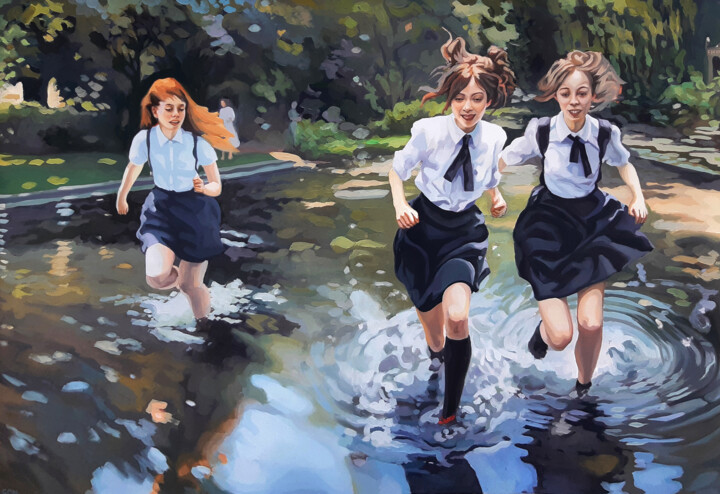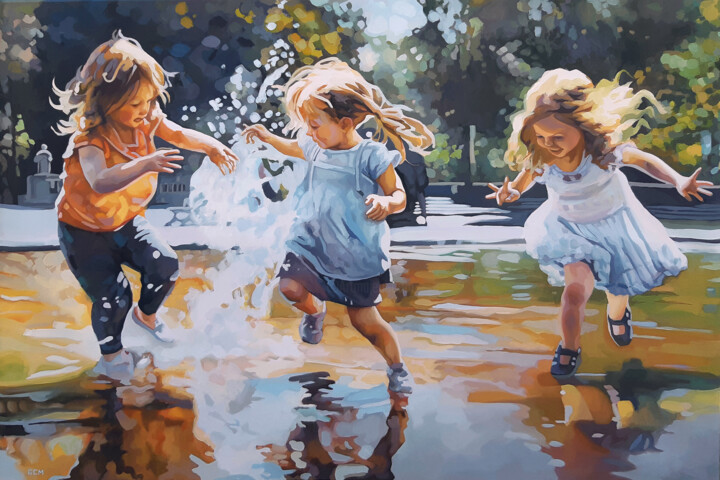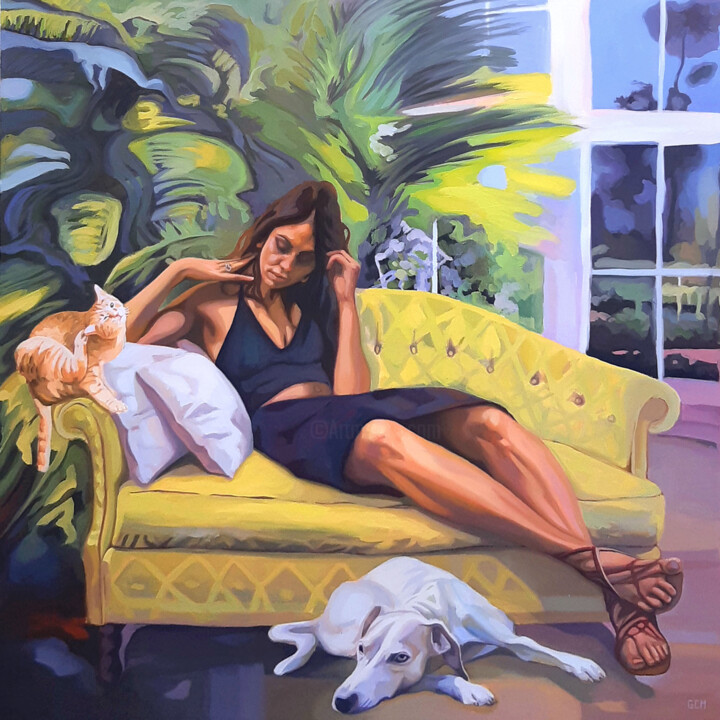What inspired you to create art and become an artist? (events, feelings, experiences...)
I believe that art symbolically represent the territory of absolute freedom and is one of the most beautiful and interesting fields of work in which a person can be active, a field in which personal development and the possibility of affirmation have no limits.
What is your artistic background, the techniques and subjects you have experimented with so far?
I have always loved art. I drew and was passionate about photography since childhood, in high school I was part of a rock band called "Dawn of progress", but certainly my debut as an artist was during the student period at the Art University of Bucharest, where I studied painting and I also obtained a master's degree in visual arts.
I consider myself an experimental artist, concerned with the concept and the discovery of new meanings of art, and probably because of this, at the beginning of my career, in parallel with painting, I realized a series of social projects such as "Home Alone", a relief project through the education of underprivileged children, "Construction, demolition", a project about the effect of Romanian politics in culture, or projects in which we involved musicians, theater artists and writers, in mixed projects, in which we created together and exhibited a series of performances and live sessions such as "Vizioniarum", a project to open perception through art.
After my university studies, I also studied clay modeling, sculpture elements and ceramic art, I exhibited at decorative art and design events, but in recent years I have devoted myself exclusively to painting and I believe that the proverb "first love is never forgotten" is complete true, because I love painting and feel it close to my soul.
What are the 3 aspects that differentiate you from other artists, making your work unique?
I don't know if I can talk about my art and give it such qualifications, but I am definitely concerned with the subject of uniqueness and from my point of view, in contemporary art, in order to differentiate yourself from other artists and to create a unique work, you must be innovative, authentic and creative. Innovative, if I mean the development of a a new technique or language of expression; authentic, when we discuss how personal the artist's work is and especially how much it does not resemble other artists, and creative if i am reffering to the depth of the chosen themes or subjects.
Where does your inspiration come from?
I find my inspiration in a different way with each work or project. For example, the series of works "Colors without names" is inspired by poems written by me, for each painting I conceived at the beginning a sketch in words, a small poem that opened my imagination and somehow penciled my work. In other older projects, the developed themes by me were related to the social-political framework of the respective period and represented a response to various events or problems of society at that time. For example, "Fair-play" was a painting project in which I satirized the aggressiveness of football fans in Romania.
What is your artistic approach? What visions, sensations or feelings do you want to evoke in the viewer?
Someone, very dear to me, introduced me in a short presentation material saying that in my paintings I offer both rock and roll and poetry. I would say that I am an artist who dreams with his eyes wide open and who tries to express as honestly as possible the experiences, thoughts and emotions that I want to share with the viewers and that is why most of my works have ideas and a positive energy and are focused on the aesthetics of beauty.
I am particularly concerned with figurative language and in painting I try to capture and reproduce penciled characters through certain subtle details, a certain movement, a certain moment that seems so important, that the whole work looks "frozen" in time.
What is the process of creating your works? Spontaneous or with a long preparatory process (technical, inspiration from art classics or other)?
I can say that I am a conceptual artist, because first of all I seek to have meaning in my works, the creative process is quite elaborate, from the idea, to the sketch and to the final work, there are many steps that I follow and maybe this is and the reason why I create somewhere around 20-30 painting works per year and no more.
Do you use a particular work technique? if so, can you explain it?
Making painting on canvas, I worked for many years in acrylic, but in recent years I rediscovered the beauty and accuracy of colors in oil. I think that the materials used together with the work technique must be chosen or developed depending on the type of work you want to do, depending on the language or the theme of the work.
Are there any innovative aspects in your work? Can you tell us which ones?
Periodically I experiment and try to improve my work technique and even “sacrifice” certain works, using new techniques and trying to "make mistakes" voluntarily and in this way learn new things. In the painting executed on ceramic materials, respectively on porcelain, I managed to develop a very interesting technique, namely to paint with pigments in the oil technique, fired at 1250 C, under the final glaze that is placed on surface of the objects.
Do you have a format or medium that you are most comfortable with? if yes, why ?
I prefer larger sizes of works and during the student period and especially after finishing the faculty I worked on "slightly monumental" sizes. In the "400 years of Rembrandt" project, I exhibited 6m x 2m paintings on the street and they seemed very small to me... Now I mainly work medium sizes of 1m x 1m or 1.5m x 1m. I choose the format of the work depending on the theme of the composition, for example if I want to emphasize the balance of a composition, I choose the square format and if I want to amplify the state of dynamism I choose a panoramic format of 16:9 or even wider.
Where do you produce your works? At home, in a shared workshop or in your own workshop? And in this space, how do you organize your creative work?
For many years I have rented spaces for my creative studio and the last chosen was very generous, in a former industrial hall with a space of over 120 m2. In recent years, however, I have organized a very chic studio at home with a fairly large space and I am very satisfied with this choice. In the near future I intend to build a small holiday house by the sea and I will certainly design a generous painting studio in a very bohemian environment, on the Black Sea coast.
Does your work lead you to travel to meet new collectors, for fairs or exhibitions? If so, what does it bring you?
I participate in international fairs and exhibitions, I try to promote myself as much as possible and build what is called an image brand. Such events charge me energetically and emotionally and the exchange of information during the events is fantastic, you meet new artists and collectors and for me each event seems like an extrasensory journey in space and time. The most recent event I participated in was last year in Paris and the experience was remarkable.
How do you imagine the evolution of your work and your career as an artist in the future?
I dream that one day I will exhibit in events such as the Venice Biennale, the Documenta international exhibition or in one of the great contemporary art museums in the world.
What is the theme, style or technique of your latest artistic production?
"The magical sun" is my new, figurative work with pop art accents, made in the technique of oil painting, a composition in which I tried to bring to the fore the exuberance of a warm, summer sun; the main subject is diluted in the play of light that stylizes and draws the shape of the model, a beautiful woman floating on smooth water, enchanted by the magical light of the sun.
Can you tell us about your most important exhibition experience?
It is difficult for me to compare works and projects between them, but certainly "400 years of Rembrandt, 400 years of universal culture" realized in Bucharest in 2006, was a fantastic experience in terms of complexity, the volume of work but also its international visibility. The project included an exhibition with 40 large-scale works, exhibited on the street on specially created supports, a series of indoor exhibitions in art galleries, live painting creative workshops - jazz music, interviews on Romanian televisions, in the print media and radio, the making of a video documentary made by the National Television of Romania and finally the presentation of the project by the Netherlands Embassy in Romania, at an international conference in Brussels. It's an extraordinary project...
If you could have created a famous work in the history of art, which one would you choose? And why ?
There are a lot of famous works that have fascinated me since childhood and which I studied during my training as an artist, from Mona Lisa's smile to Michelangelo's sculptures, from Rembrandt's "Night Round" and to "A Sunday Afternoon on the Island of La Grande Jatte" by Seurat, from "Starry Night" by Van Gogh and to "The Birth of Venus" by Sandro Botticelli, from "Les Demoiselles d'Avignon" of Picasso and up to the monumental paintings of Jackson Pollock, I have seen all of them in museums, researched them in detail and admired them. If history would allow me, I would choose to be the creator of the painting "The Kiss" by Gustav Klimt, a work of art that, even if it was created more than 100 years ago, retains its expressiveness, freshness, moves us with the sensitivity that it emanates and its aesthetic language sends us directly into contemporaneity.
If you could invite one famous artist (dead or alive) to dinner, who would it be? How would you suggest he spend the evening?
There are perhaps hundreds of artists that I love and who, voluntarily or not, have definitely influenced my work or my perception of the arts in general.
I would perhaps choose Robert Rauschenberg, a symbol of the artist who gave his life to art, whom I would invite to the Cedar Taver, one of the famous New York pubs of the 50s frequented by artists and I would ask him about neo-Dada, about pop art and abstract expressionism; I would choose to invite the Romanian sculptor Constantin Brancusi, and I would invite myself to his famous workshop in Paris, around the 40s, and obviously I would let him cook, because his friend, the painter Amedeo Modigliani mentioned in an interview about the famous lamb pastrami grills as only master Brancusi knew how to make them, I would ask him to tell me how how did he succeed from being a simple shepherd's child in Romania to becoming a symbol of modern sculpture in the world or how he managed to convince an American court about what abstract art means in the mind of an artist; I would perhaps invite Theo Jansen, whose kinetic sculptures have fascinated me since I was a student, an artist with an art full of sensitivity, energy, a model of what contemporary art means and in a more real and possible way, I would invite Adrian Ghenie, the Romanian painter who managed to rewrite a small fragment of the history of arts, bringing contemporary neo-realism back to the fore, an artist from my generation, who is settled in Berlin and whom I would invite to dinner, at home, in my modest painting studio in Bucharest and I am sure that we would have a lot of things to discuss about art, times and artists.

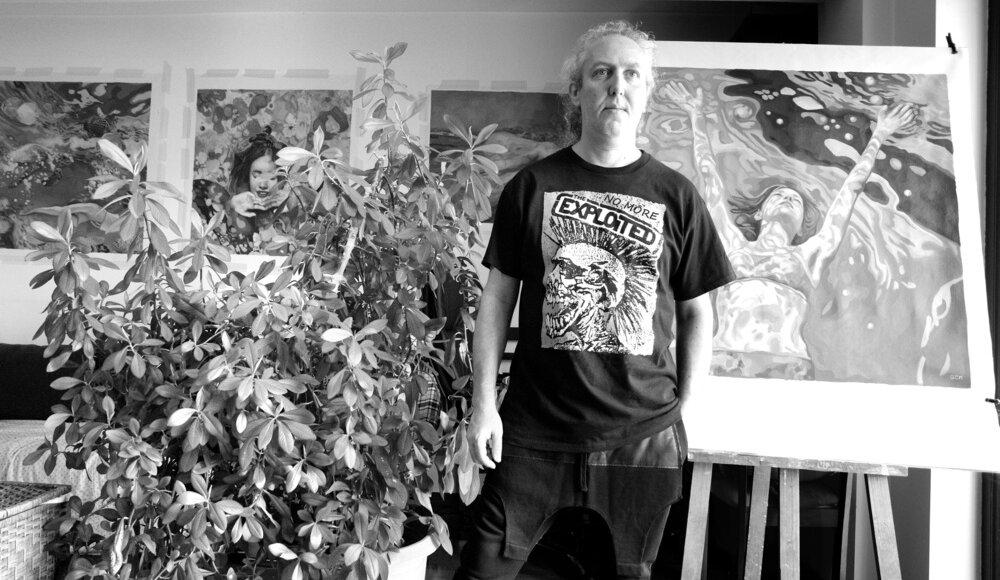



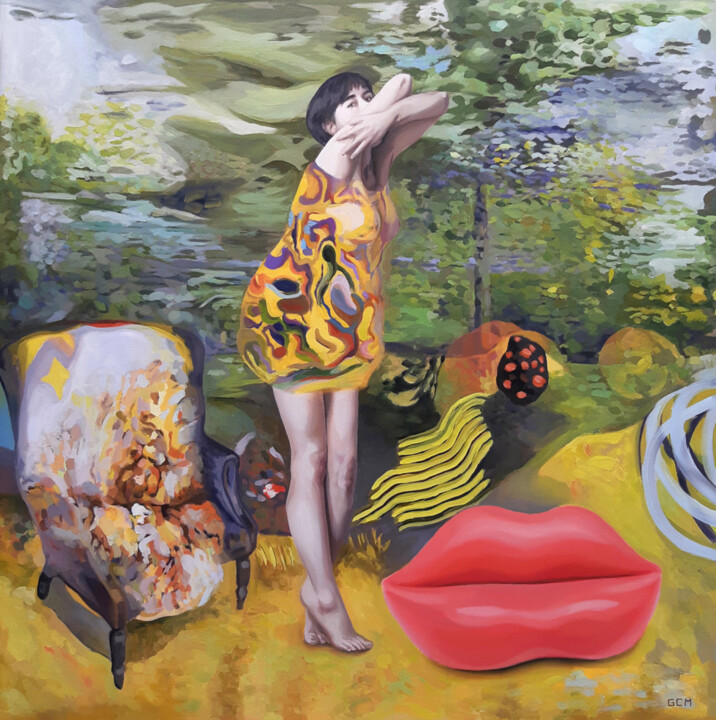


 Olimpia Gaia Martinelli
Olimpia Gaia Martinelli
